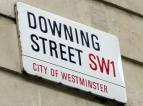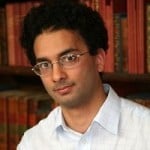Fake intelligence was used as a justification to bomb Syria. Both President Donald Trump and Prime Minister Theresa May were categorical in their assertions to the effect that “monster” Assad was responsible for killing his own people.
It is now proven that the whole thing was a hoax, a false flag, sustained by political lies and media disinformation: there was not chemical weapons attack in Douma.
On the day prior to the April 13, missile attack on Syria, following a telephone conversation between Trump and PM May, it was agreed that the “use of chemical weapons” by president Assad should “not go unchallenged”. This joint White House-Downing Street decision was ratified by PM May’s Cabinet on the morning of Friday May 13.
DÉJÀ VU:
Fifteen years ago, fake Intelligence was used as a justification to invade Iraq in 2003. Colin Powell’s “intelligence report” presented to the UN Security Council in early February 2003 was FAKE. It was s copied and pasted from the internet by members of Tony Blair’s staff.
While the Chilcot Inquiry report was released in 2016, it is worth noting that most of the dodgy dossier evidence pertaining to Tony Blair and George W, Bush was available before the onset of the Iraq war in March 2003.
Fake intelligence as well as plagiarized quotations had been slipped into an official intelligence report pertaining to Iraq’s WMD presented to the UN Security Council by Secretary of State Colin Powell on February 5, 2003. 
Damning evidence refuting Colin Powell’s official intelligence report was revealed by Cambridge Lecturer Dr. Glen Rangwala (image right) on Britain’s Channel 4 TV on February 6, 2003, on the day following Secretary of State Colin Powell’s historic Iraq WMD presentation to the UN Security Council:
“I would call my colleagues’ attention to the fine paper that the United Kingdom distributed . . . which describes in exquisite detail Iraqi deception activities.” (Colin Powell, UN Security Council, February 5, 2003)
Powell was referring to “Iraq Its Infrastructure Of Concealment, Deception And Intimidation”, published on January 30, 2003.
According to Rangwala, the British intelligence document was fake. It had not been prepared by British intelligence. It was copied and pasted from the internet by members of Tony Blair’s staff:
The Downing Street authors state they drew “upon a number of sources, including intelligence material” (p.1, first sentence). In fact, they copied material from at least three different authors and gave no credit to them. Indeed, they plagiarized, directly cutting and pasting or near quoting.
A close textual analysis suggests that the UK authors had little access to first-hand intelligence sources and instead based their work on academic papers, which they selectively distorted. Some of the papers used were considerably out of date. This leads the reader to wonder about the reliability and veracity of the Downing Street document.
It was a fake document prepared on the instructions of prime minister Blair with a view to building a “credible” justification to wage war on Iraq.
Rangwala’s analysis was more than a smoking gun. It revealed the Big Lie. It invalidated Colin’s Powell’s presentation to the UN Security Council. It had to be suppressed.
In many regards, the Rangwala revelation was far more important than the leak of the Secret July 2002 Downing Street Memo:
C reported on his recent talks in Washington. There was a perceptible shift in attitude. Military action was now seen as inevitable. Bush wanted to remove Saddam, through military action, justified by the conjunction of terrorism and WMD. But the intelligence and facts were being fixed around the policy. The NSC had no patience with the UN route, and no enthusiasm for publishing material on the Iraqi regime’s record. There was little discussion in Washington of the aftermath after military action.
The “WMD facts” had to be “documented”. Did British intelligence refuse to comply with Tony Blair’s demands to produce a fast track report which would “fix the facts”? Rangwala’s analysis confirms that British intelligence was not involved in what we might describe as the “Sloppy Dossier”.
The “facts” were put together in a hurry (not by MI6) but by Tony Blair’s public relations’ staff, who casually committed acts of plagiarism and political fraud in support of a criminal military agenda.
The report was finalized one week before Colin Powell’s presentation to the UN Security Council; the “facts” and supporting quotations were copied and pasted by members of Tony Blair’s cabinet from the internet and inserted into an official and authoritative document.
Plagiarism had become a means to justifying the war on Iraq.
The Rangwala revelation was the “unspoken truth”. With the exception of Channel 4 and The Guardian, it was not the object of mainstream media coverage both before as well as after the March invasion of Iraq. It had to be suppressed. The invasion of Iraq had already been scheduled for March 2003.
The Role of Colin Powell in Planning the War on Iraq
 In retrospect, the Rangwala findings also bring to the forefront the insidious and complicit role of Colin Powell, who organized the Crawford Texas meetings in early April 2002 between Bush and Blair, as confirmed by the recently leaked emails (see below).
In retrospect, the Rangwala findings also bring to the forefront the insidious and complicit role of Colin Powell, who organized the Crawford Texas meetings in early April 2002 between Bush and Blair, as confirmed by the recently leaked emails (see below).
What these emails suggest is that Colin Powell had been entrusted in setting the stage for the war on Iraq, initially at the Bush-Blair Crawford meetings on April 5-7, 2002, leading up to his presentation of the British intelligence dossier on Iraq’s alleged WMD at the UN Security Council on February 5, 2003.
Lest we forget Colin Powell played a behind the scenes role in the Iran Contra Affair.
The Crawford meetings were intended to plan the war on Iraq.
Colin Powell was a central political instrument. The issue is who was Behind Colin Powell?
Who was present at the Crawford meetings? Reports confirm that Colin Powell, Donald Rumsfeld, Paul Wolfowitz, Condoleeza Rice were among those present.
In the wake of the Iraq invasion, the plagiarized “British intelligence Iraq Dossier” presented to the UN Security Council by (former) Secretary of State Colin Powell was so to speak “forgotten”.
The plagiarism issue nonetheless confirms beyond doubt the war crimes’ allegations against George W. Bush and Tony Blair.
There was no follow-up. Rangwala’s report which confirmed the criminal nature of the US led war on Iraq, which resulted in more than 2 million civilian deaths.
Michel Chossudovsky, November 8, 2015, updated: July 14, 2016, April 17, 2018
.
Plagiarism and Iraq’s WMDs: British Intelligence Iraq Dossier Relied on Recycled Academic Articles
by Glen Rangwala
Below is the text presented by Dr. Rangwala to the House of Commons Select Committee on Foreign Affairs
It was presented in June 2003, in the wake of the invasion and occupation of Iraq
http://www.parliament.the-stationery-office.co.uk/pa/cm200203/cmselect/cmfaff/813/813we18.htm
THE PRESENTATION OF THE 30 JANUARY 2003 DOSSIER
1. The 19-page dossier, entitled “Iraq—Its Infrastructure of Concealment, Deception and Intimidation”, was released on 30 January 2003. The document begins with the statement that:
“This report draws upon a number of sources, including intelligence material (. . .”
2. The assertion that the intelligence agencies were involved in the production of the dossier was made more explicitly by Prime Minister Blair when he announced the release of the dossier to the House of Commons on 3 February 2003:
“We issued further intelligence over the weekend about the infrastructure of concealment. It is obviously difficult when we publish intelligence reports, but I hope that people have some sense of the integrity of our security services. They are not publishing this, or giving us this information, and making it up. It is the intelligence that they are receiving, and we are passing it on to people.”
www.parliament.the-stationery-office.co.uk
A REVIEW OF THE CONTENTS OF THE 30 JANUARY 2003 DOSSIER
Sources
3. The bulk of the 19-page document (pp 6-16) is directly copied without acknowledgement from three different sources that are on the internet. The most extensively used source is an article in the on-line Israeli journal, Middle East Review of International Affairs (September 2002), entitled “Iraq’s Security and Intelligence Network: A Guide and Analysis”.
http://meria.idc.ac.il/journal/2002/issue3/jv6n3a1.html
4. The author of the piece is Mr Ibrahim al-Marashi, a postgraduate student then based at the Monterey Institute of International Studies, California, who is completing a doctorate at Oxford University. He has confirmed to me that his permission was not sought; in fact, he didn’t even know about the British document until I contacted him on 4 February to enquire whether his permission was given.
5. In addition to Mr Marashi’s work, there is also the use of two articles from the specialist security magazine,Jane’s Intelligence Review. On-line summaries of articles by Mr Sean Boyne in 1997 and Mr Ken Gause in 2002 are on the GlobalSecurity.org website, at:
http://globalsecurity.org/intell/world/iraq/
These texts were also amalgamated in part into the UK dossier.
6. The fact that these sources were copied is most clear from the typographical errors and anomalous uses of grammar in the original pieces that are incorporated into the Downing Street document. For example, Mr Marashi had written:
“Saddam appointed, Sabir `Abd al-‘Aziz al-Duri as head (. . .)”
There is a misplaced comma after the second word. On p 13, the British dossier incorporates the same misplaced comma:
“Saddam appointed, Sabir `Abd al-‘Aziz al-Duri as head (. . .)”
7. Because the texts of these three authors are copied directly also results in a proliferation of different transliterations (for example, different spellings of the Ba’th party, depending on which author is being copied).
Modifications to the original articles
8. The only exceptions to these acts of copying were the tweaking of specific phrases. For example, most of p 9 on the functions of the Mukhabarat (General Intelligence) is copied directly from Mr Marashi’s article. However, Marashi writes of the Mukhabarat’s role in:
“monitoring foreign embassies in Iraq”.
This becomes in the British dossier:
“spying on foreign embassies in Iraq”.
Similarly, on the same page, Marashi writes that the Mukhabarat had a role in:
“aiding opposition groups in hostile regimes”
The British dossier renders this as:
“supporting terrorist organisations in hostile regimes”.
9. A further example is from the section on “Fedayeen Saddam” (Saddam’s Self-Sacrificers). Most of this text is copied from the 1997 article by Sean Boyne. However, Boyne writes that the personnel of this organisation are:
“recruited from regions loyal to Saddam”, and refers to their original grouping as “some 10,000-15,000 `bullies and country bumpkins.'”
10. This becomes in the British government’s text, at pp 15-16, a reference to how its personnel are:
“press ganged from regions known to be loyal to Saddam” . . . “some 10,000-15,000 bullies.”
11. The reference in Mr Boyne’s article to how the organisation was made up of “bullies and country bumpkins” was shorn of its last three words in the UK dossier, perhaps to render a more threatening picture of the organisation than that contained in the original article.
12. Numbers are also increased or are rounded up. So, for example, the section on “Fedayeen Saddam” (pp 15-16) is directly copied from Boyne’s article, almost word for word. The only substantive difference is that Mr Boyne estimates the personnel of the organisation to be 18,000-40,000 (Ken Gause, in another article that was substantially copied, estimates personnel in the region of 10,000-40,000). The British dossier instead writes “30,000 to 40,000”. A similar bumping up of figures occurs with the description of the Directorate of Military Intelligence.
Errors
13. There is at least one serious substantive mistake in the British text, on p 14, about the Iraqi organisation the Military Security Service (al-Amn al-Askari). After an initial two paragraphs copied from Marashi’s 2002 article, the remainder of the text is taken from the description by Sean Boyne in his 1997 article of a wholly different organisation called the General Security Service (al-Amn al-Amm). That is, it mixes up the descriptions of two different organisations.
14. The result is a confusion that renders the description incoherent. The description of the Military Security Service (al-Amn al-Askari) begins by relating how this organisation was created in 1992 (in a section copied from Marashi). It then describes how the Military Security Service moved headquarters in 1990 (in a piece copied from Boyne on the activities of the General Security Service), two years before the organisation was even created.
15. Later in the same section, the UK dossier claims that the head of the Military Security Service is Taha al-Ahbabi. This is from Boyne’s description of the General Security Service. In fact, the Military Security Service was headed by Thabet Khalil when the dossier was released.
FURTHER COMMENTS
16. The information in the UK dossier is presented as being an accurate statement of the current state of Iraq’s security organisations. However, it may not be anything of the sort. Mr Marashi—the real and unwitting author of much of the document—refers in his article to his primary source as being the documents captured by Coalition forces in 1991, and which are now retained by the Massachusetts-based organisation, the Iraq Research and Documentation Project. His own focus is the activities of Iraq’s intelligence agencies in Kuwait in the period from August 1990 to January 1991, as this is the subject of his thesis. As a result, much of the information presented as relevant to how Iraqi agencies are currently engaged with UNMOVIC is 12 years old.
17. When the document was first released as a Microsoft Word document, I checked the properties of the text in the File menu. It revealed the authors of the text as P. Hamill, J. Pratt, A. Blackshaw, and M. Khan. Those names were removed within hours from the downloadable file. However, in collaboration with journalists, I have since checked who these individuals are. The identity of the authors is as follows:
Paul Hamill, a Foreign Office official;
John Pratt, a junior official from the Prime Minister’s Strategic Communications Unit;
Alison Blackshaw, Alastair Campbell’s personal assistant;
Mustaza Khan, news editor of the 10 Downing Street website.
THE ORDERING OF THE DOSSIER
18. The dossier is ordered as follows:
p 1 is the summary.
pp 2-5 consists of, firstly, a repetition of the comments of Hans Blix, Executive Chairman of UNMOVIC, to the Security Council in January on the difficulties they were encountering. Further claims about the activities of al-Mukhabarat follow. These claims are not backed up, and have in some cases been specifically denied by Hans Blix. For example, the UK dossier claims on p 3 that:
“Journeys are monitored by security officers stationed on the route if they have prior intelligence. Any changes of destination are notified ahead by telephone or radio so that arrival is anticipated. The welcoming party is a give away.”
This can be contrasted with the assessment of Hans Blix on 14 February 2003 that:
“Since we arrived in Iraq, we have conducted more than 400 inspections covering more than 300 sites. All inspections were performed without notice, and access was almost always provided promptly. In no case have we seen convincing evidence that the Iraqi side knew in advance that the inspectors were coming.”
http://www.un.org/Depts/unmovic/blix14Febasdel.htm
Similarly, the UK dossier claims on p 3 that:
“Escorts are trained, for example, to start long arguments with other Iraqi officials `on behalf of UNMOVIC’ while any incriminating evidence is hastily being hidden behind the scenes.”
By contrast, Dr Blix relates in the same presentation of 14 February that:
“we note that access to sites has so far been without problems, including those that had never been declared or inspected, as well as to Presidential sites and private residences.”
p 6 is a simplified version of Mr Marashi’s diagram at: http://cns.miis.edu/research/iraq/pdfs/iraqint.pdf
p 7 is copied (top) from Mr Gause (on the Presidential Secretariat), and (middle and bottom) from Mr Boyne (on the National Security Council).
p 8 is entirely copied from Mr Boyne (on the National Security Council).
p 9 is copied from Mr Marashi (on al-Mukhabarat), except for the final section, which is insubstantial.
p 10 is entirely copied from Mr Marashi (on the General Security Service), except for the final section, which is insubstantial.
p 11 is entirely copied from Mr Marashi (on Special Security), except for the top section (on General Security), which is insubstantial.
p 12 is entirely copied from Mr Marashi (on Special Security).
p 13 is copied from Mr Gause (on Special Protection) and Mr Marashi (Military Intelligence).
p 14 is copied from Mr Marashi (first two paragraphs) and then wrongly copied from Mr Boyne (on Military Security). The last section, on the Special Republican Guard, is copied from Mr Marashi.
p 15 is copied from Messrs Gause and Boyne (on al-Hadi project / project 858).
pp 15-16 is copied from Boyne (on Fedayeen Saddam).
p 16: The final section, on the Tribal Chiefs’ Bureau, seems to be copied from Anthony H. Cordesman, “Key Targets in Iraq”, February 1998, http://www.csis.org/stratassessment/reports/iraq_argets.pdf, pg. 8
pp 17-19 make general claims about human rights in Iraq.
Dr Glen Rangwala
Newnham College
Cambridge
16 June 2003
The original source of this article is Global Research


 In retrospect, the Rangwala findings also bring to the forefront the insidious and complicit role of Colin Powell, who organized the Crawford Texas meetings in early April 2002 between Bush and Blair, as confirmed by the recently leaked emails (see below).
In retrospect, the Rangwala findings also bring to the forefront the insidious and complicit role of Colin Powell, who organized the Crawford Texas meetings in early April 2002 between Bush and Blair, as confirmed by the recently leaked emails (see below).




/https://www.niagarafallsreview.ca/content/dam/thestar/news/canada/2021/09/25/huawei-executive-meng-wanzhou-receives-warm-welcome-upon-return-to-china/_1_meng_wanzhou_2.jpg)













No comments:
Post a Comment
Note: Only a member of this blog may post a comment.